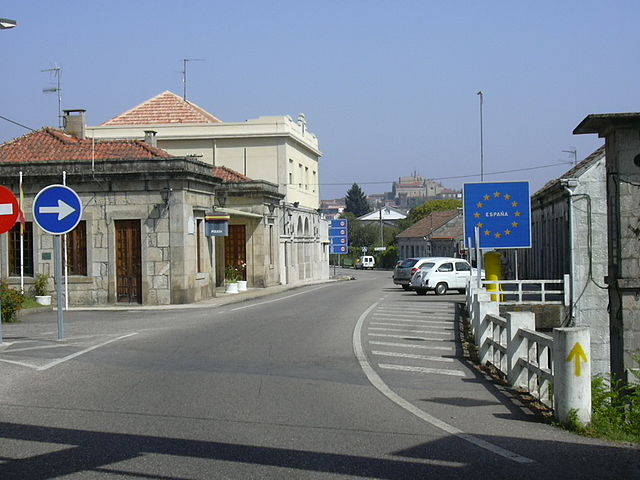The Schengen Agreement is a treaty which led to the creation of Europe's Schengen Area, in which internal border checks have largely been abolished. It was signed on 14 June 1985, near the town of Schengen, Luxembourg, by five of the ten member states of the then European Economic Community. It proposed measures intended to gradually abolish border checks at the signatories' common borders, including reduced-speed vehicle checks which allowed vehicles to cross borders without stopping, allowing residents in border areas freedom to cross borders away from fixed checkpoints, and the harmonisation of visa policies.
Signatures of the Schengen Agreement on 14 June 1985
Schengen, border town in Luxembourg where the agreement was signed
A simple sign marks the Schengen border between Spain and Portugal.
The Schengen Area is an area encompassing 29 European countries that have officially abolished border controls at their mutual borders. Being an element within the wider area of freedom, security and justice policy of the European Union (EU), it mostly functions as a single jurisdiction under a common visa policy for international travel purposes. The area is named after the 1985 Schengen Agreement and the 1990 Schengen Convention, both signed in Schengen, Luxembourg.
The Gibraltar/Spain border in 2004 with the Rock of Gibraltar in the background
The border checkpoint in La Farga de Moles on the Andorra–Spain border
A typical Schengen internal border crossing has no border control post and only a common EU-state sign displaying the name of the country being entered, as here between Germany and Austria. The larger blue sign announces entry to the Federal Republic of Germany in German, the smaller white sign announces entry into the German state of Bavaria.
Schengen arrival gate at Rīga Airport (RIX)







